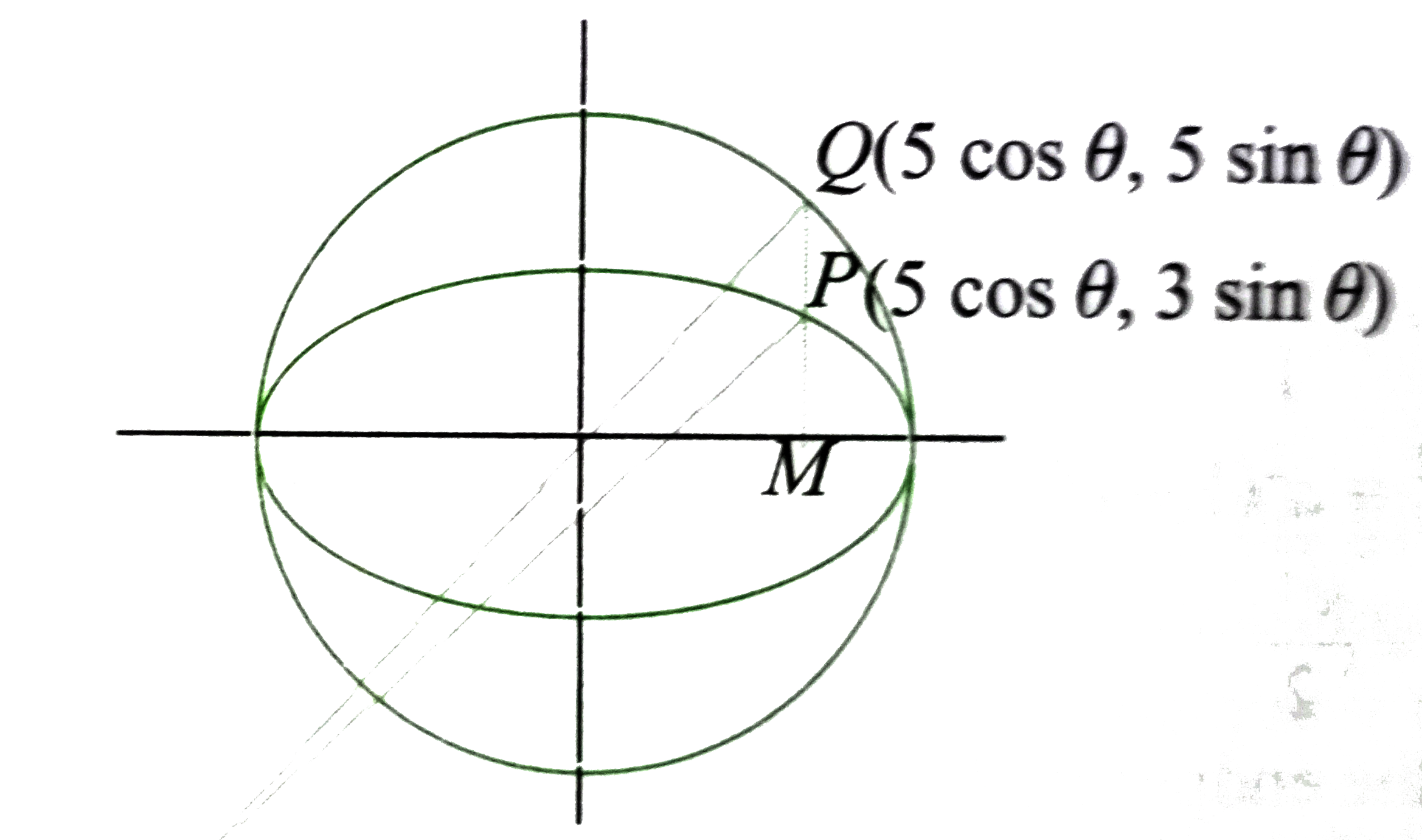Any ordinate MP of the ellipse x225+y29=1 meets the auxiliary circle at Q. Then locus of the point of intersection of normals at PandQ to the respective curves is x2+y2=8 (b) x2+y2=34 x2+y2=64 (d) x2+y2=15
x2+y2=8
x2+y2=34
x2+y2=64
x2+y2=15
The equation of normal of normal to the ellipse at P is
5xsec,θ−3ycosecθ=16
The equation of normal to the circel x2+y2=25 at point Q is y=xtanθ (2)

The eliminating θ from (1) and (2) we, get x2+y2=64
Similar Questions
Any ordinate MP of the ellipse x225+y29=1 meets the auxiliary circle at Q. Then locus of the point of intersection of normals at PandQ to the respective curves is x2+y2=8 (b) x2+y2=34 x2+y2=64 (d) x2+y2=15
View SolutionP is a point on the ellipse x225+y29 and Q is corresponding point of P on its auxiliary circle. Then the locus of point of intersection of normals at P & Q to the respective curves is
View Solution
Knowledge Check
The locus of the point of intersection of perpendicular tangents to the circles x2+y2=a2 and x2+y2=b2 , is
Ax2+y2=a2−b2Bx2+y2=a2+b2Cx2+y2=(a+b)2Dnone of these
Any ordinate MP of an ellipse meets the auxillary circle in Q. Ptove that the locus of the point of intersection of the normals at P and Q is the circle x2+y2=(a+b)2.
View SolutionThe locus of the point of intersection of perpendicular tangents to the ellipse (x−1)216+(y−2)29=1 is
View SolutionLocus of point of intersection of perpendicular tangents to the circle x2+y2−4x−6y−1=0 is
View SolutionLocus of the point of intersection of perpendicular tangents drawn one to each of the circles x2+y2=8andx2+y2=12 is
View SolutionIf the tangent to the ellipse x2+2y2=1 at point P(1√2,12) meets the auxiliary circle at point RandQ , then find the points of intersection of tangents to the circle at QandR.
View SolutionIf normal of circle x2+y2+6x+8y+9=0 intersect the parabola y2=4x at PandQ then find the locus of point of intersection of tangent's at PandQ.
View Solutionif a variable tangent of the circle x2+y2=1 intersects the ellipse x2+2y2=4 at P and Q. then the locus of the points of intersection of the tangents at P and Q is
View Solution
